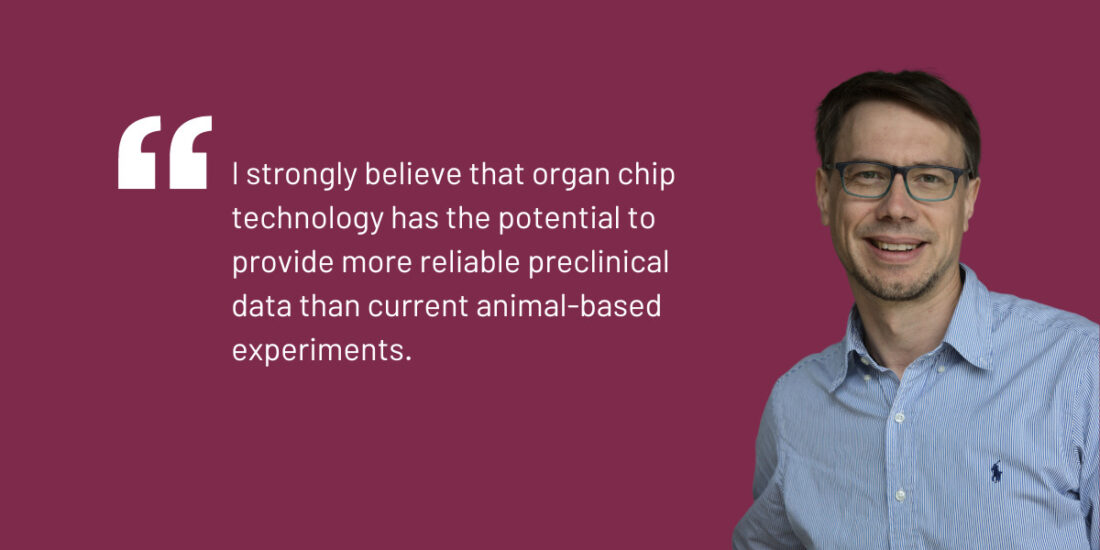The faces of Dynamic42: Thomas Sommermann
Lately Thomas Sommermann joined Dynamic42. Thomas is an experienced scientist in the field of immunology and shares our vision regarding the enormous potential of the organ-on-chip technology. Therefore, we are very happy to have him support our research team!
From Nuremberg to Jena via Cambridge and Berlin
Thomas joins us from the Hans Knöll Institute (HKI), where he was a senior postdoc and head of the cell sorting facility at the Infection Immunology department of Professor C. Zielinski. In his role he performed spectral, high-dimensional FACS (Fluorescence Activated Cell Sorter) analyses and sorting of immune cells especially human T cells.
Thomas began his carrier at the Friedrich-Alexander University of Nuremberg-Erlangen, where he studied biology with a focus on molecular cell biology in the field of colorectal cancer.
After successfully completing his diploma, he was offered a PhD-student fellowship at Harvard University in Cambridge, USA. In his PhD work Thomas addressed cell signaling and cell metabolism of lymphomas associated with Epstein-Barr virus.
Thomas’ then joined the department of Immune Regulation and Cancer at the Max Delbrück Center in Berlin. There he continued his research on lymphomas and the Epstein-Barr virus using transgenic mouse models.
Diversification of immune cell types: Thomas’ goals at Dynamic42
Having worked extensively with mouse models, Thomas is sure that there are limitations to translating findings from animal research into the human system, creating a fundamental need to develop novel complementary and alternative methods to animal testing.
``I strongly believe that organ chip technology has the potential to provide more reliable preclinical data than current animal-based experiments.``
Thomas will now promote the efforts of Dynamic42 to further integrate various immune cell populations into organ-chips. Immunocompetent organ models better mimic real body physiology and will allow D42 to address the effects of treatment approaches on immune cells within the target tissue.
More interesting articles:
Blog
Organ-on-chip applications by organ type – what has been done?
This blog lists examples of organ-on-chip models by organ type that have been used in the past, providing the respective literature for your reference.
Read MoreBlog
Exploring infectious disease dynamics through organ-on-chip technology
This blog explores established infection models using our organ-on-chip technology and their implications for scientific research.
Read MoreBlog
Immunocompetent Organ Models – the Future of Biomedical Research
One crucial factor that plays a pivotal role in the success of organ-on-cip models is immunocompetence. In this blog post, we delve into the significance of immunocompetence in organ-on-chip models and how it opens new avenues for advancing medical research.
Read More

